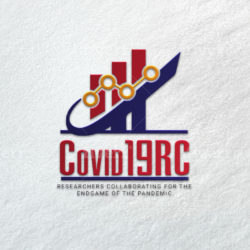In the last week of January, Hubei/Wuhan was locked down, and in Wenzhou (which also had a small but significant number of cases, especially relative to the rest of China) the government discouraged group meals. Since that was the exact Chinese New Year holiday week, most people had actually planned to have a lot of group meals with family and friends. It was all completely cancelled. Movie theaters and restaurants all closed down. People were asked to stay at home and not have group gatherings. Even small groups getting together for mahjong for example, was also not allowed and could be broken up and confiscated by police. People who don’t comply can be arrested. At that time the few people who walked around outside all pretty much wore face masks.
Shortly thereafter, the policy came out that said people are required to stay at home. The control of the local government is at the level of residential complex. Initially a system of paper and pencil residency passes was given to each household. That piece of paper allows one member of each apartment to leave the complex no more than once every two days for the purpose of buying food (note that once every two days is not per person, but per household). Each time someone goes out, a box on the sheet is checked off. I think the purpose was specifically for buying food only, although no specific time or location limit was implemented. Most people probably just wanted to get the groceries and go back home immediately, given what was happening in Wuhan. Each time going in and out of the apartment complex, temperature was taken. Face mask became a requirement for everyone who goes outside.
Shortly after that, the electronic version of health pass was implemented. It is a QR code which is in the cell phone App called Alipay. To get one, you need to input your real name and ID information, as well as the address you are currently staying at, and also filling out a survey about your health condition and whether you encountered any unhealthy people so far recently. You then get a color QR code, Green for OK, and Yellow and Red means not OK. My understanding is that since the cell phone location can always be tracked, the health authority can technically track everywhere you go in the future. If you go somewhere where later a virus-infected individual was said to have been (for example), the code might dynamically turn from green to yellow, or red. Only if the code is green can a person go anywhere, including outside of the apartment complex. Even after the QR code was implemented, temperature check was still being conducted each time going in and out of the apartment complex (up until recently). We can always check our own QR code status using our cell phone at anytime.
Although we have not gone anywhere really over the past weeks, we have some friends who used the QR code for their necessary travels. Some people say that the use and strictness of the QR code varies by province. Zhejiang (where we are, also home of Alipay) is one of the strictest. You need the QR code to leave the apartment, get into the train station, board the train and so on, everywhere you go.
There is one more notable thing I observed, which is that every evening during the commercial break of the evening news, there is a several minutes long public health message for people to watch. In the earlier days it reminded people about the laws related to coronavirus. In the more recent days it is a cartoon with music that reminds people how to prevent virus transmission in the workplace, such as sitting far apart when eating, spraying disinfectant regularly, including in the trash can, wearing face mask, and so on.
